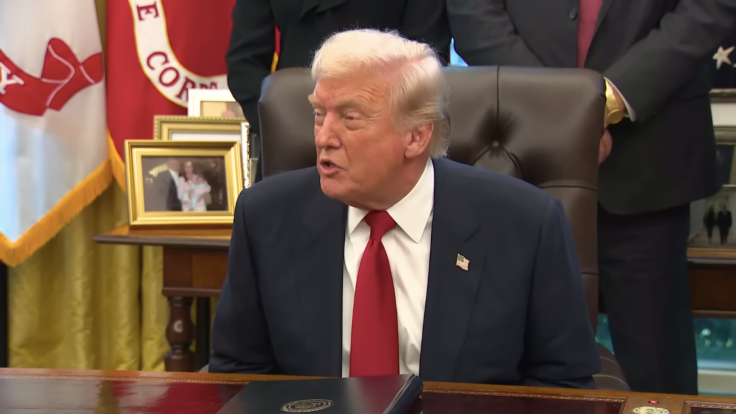You Paid For It. Now He'll Pay You Back? The Hidden Cost Behind Trump's $2,000 Dividend

US President Donald Trump has vowed to send most Americans a 'dividend of at least $2,000 a person,' funded by tariff revenues collected under his administration.
The populist proposal, shared on his Truth Social account on 9 November, has drawn intense scrutiny from economists and budget experts, who argue the math doesn't add up.
But while the idea may sound like a win for ordinary citizens, budget analysts warn that the cost, funding, and timing all raise serious questions, according to ABC News.
What Trump is Promising
Posting on his Truth Social account on November 9, Trump announced that 'a dividend of at least $2,000 a person (not including high-income people!) will be paid to everyone.'
People.com reported that he also hailed his tariff policy as a success, asserting the United States was 'taking in trillions of dollars' and would use that money to begin paying down the national debt.
However, Treasury Secretary Scott Bessent later clarified that the 'dividend' might not appear as a direct cash payment, telling Bloomberg it 'could be just the tax decreases that we are seeing on the president's agenda.'
The True Cost of the Payout
Independent fiscal watchdogs have warned that the numbers don't balance. The Los Angeles Times reported that paying $2,000 to every eligible American would cost around $600 billion a year—roughly double the government's annual tariff revenue.
The Committee for a Responsible Federal Budget (CRFB) calculated that if such payments were to continue annually, they could add $6 trillion to the federal deficit over a decade.
The Tax Foundation estimates the cost at nearly $300 billion if restricted to adults earning under $100,000, but that figure would still increase if dependents were included.
Where the Money Really Comes From
Trump has tied the proposed dividend to revenue from tariffs, claiming they've delivered 'billions and trillions.' Yet actual receipts tell a different story. According to People.com, total tariff collections through September 2025 stood at $195 billion. Even optimistic estimates from Fast Company suggest annual revenue would reach just $200–$300 billion — far short of what's required to cover payments.
Further uncertainty looms as the Supreme Court reviews a case questioning whether Trump's sweeping use of emergency powers to impose tariffs is constitutional. If the Court limits those powers, a large portion of the supposed revenue could vanish overnight.
Who Gains and Who Pays
At face value, the $2,000 promise appears to reward working Americans, but the funding mechanism means taxpayers might ultimately foot the bill. Because tariffs raise prices on imported goods, consumers are already paying more in everyday costs.
According to Al Jazeera, tariffs have increased annual household expenses by $1,600 to $2,600, meaning many families would effectively pay more through higher prices than they'd receive from any dividend. The CRFB projects that diverting tariff revenue to these payouts could push federal debt to 134% of GDP by 2035, compared to the current projection of 120%.
Eligibility also remains unclear. Trump excluded 'high-income people' but has offered no definition of that threshold, nor whether families with children would qualify.
Fast Company reported that some Americans may end up paying more in higher prices than they would ever receive from the promised dividend.
A Political Slogan or Real Policy?
Economists and legal analysts alike doubt the feasibility of Trump's proposal. Without congressional approval or a structured funding mechanism, the "dividend" risks becoming more campaign slogan than fiscal plan.
One senior budget analyst told ABC News the idea 'sounds generous but ignores economic reality.' Another described it as 'deeply irresponsible,' warning that tariff-based funding 'cannot sustain payments of this scale without creating a larger financial crisis.'
For now, Trump's promise taps into populist sentiment, offering a simple message: Americans will get back what they paid. But behind the headline figure lies a complex equation—where most households may end up giving more than they get.
The Bottom Line
Trump's proposed $2,000 dividend taps into populist frustration, offering a message that Americans will get back what they paid for.
However, behind the headline number lies a complex web of budget gaps, legal risks, and economic trade-offs that could result in taxpayers paying more than they gain.
For Americans waiting for their cheque, the real question may not be when the money arrives--but who ultimately pays the price.
© Copyright IBTimes 2025. All rights reserved.




















